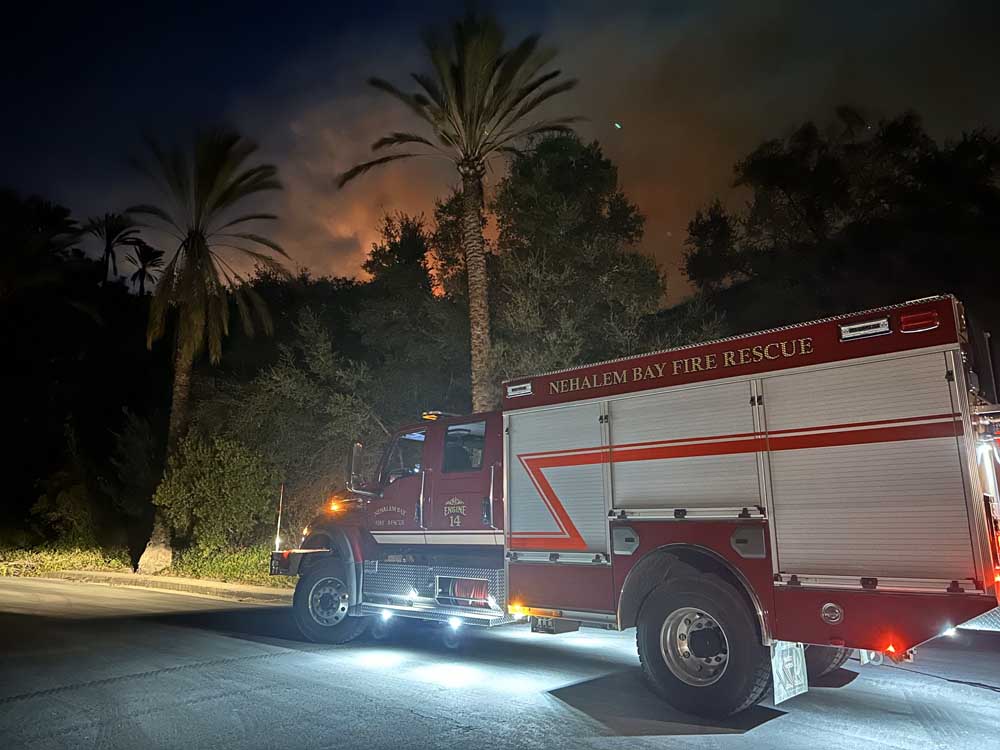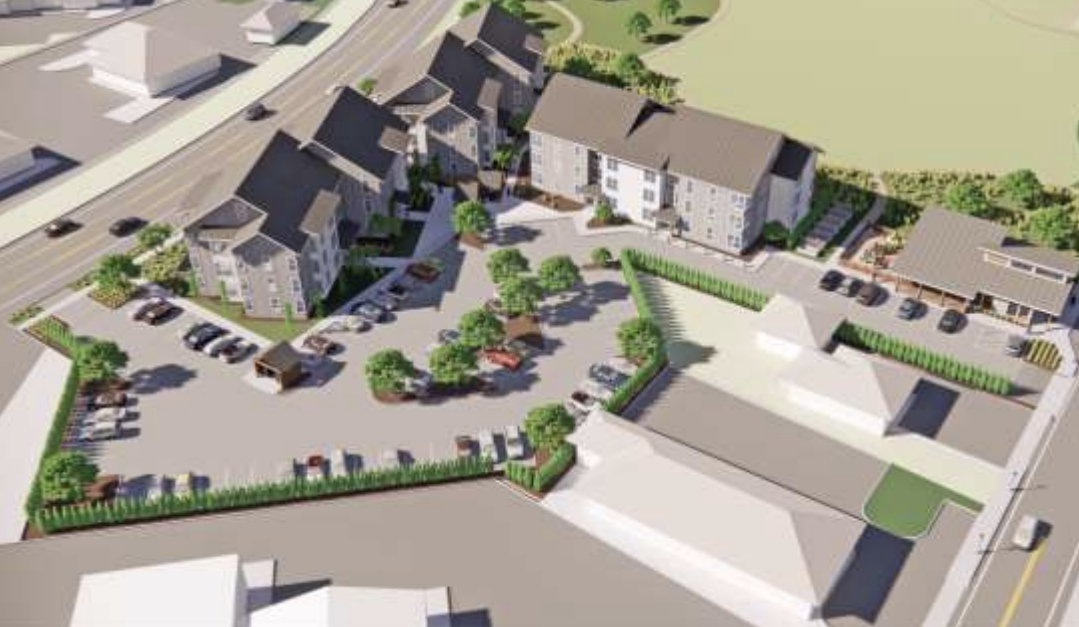Answering the call: Area firefighters head to Los Angeles
Published 3:00 pm Friday, January 17, 2025

- A fire engine from Nehalem Bay is on the scene in Los Angles as a fire burns over the ridge. Firefighters from Oregon Coast communities responded to a request for help from California authorities.
Strike teams from throughout Oregon have traveled over 1,000 miles to Southern California to help battle the Los Angeles fires, which have burned tens of thousands of acres, destroyed homes and businesses, and killed at least 25 people.
Seaside Fire & Rescue Chief David Rankin is among the firefighters, leading crews and engines from the Astoria, Cannon Beach, Nehalem and Lewis and Clark fire departments.
In all, Rankin’s task force includes 16 firefighters from Clatsop County and two from Nehalem.
Rankin had to rapidly mobilize his Clatsop County colleagues after California firefighters sent out an Emergency Management Assistance Compact request, under an agreement allowing agencies across state lines to assist with resources in case of a disaster.
“Once they call, we only have a couple of hours to kind of scramble and put crews together,” he said. “So if people aren’t returning phone calls or answering them, we just kind of move on to the next department and the next person that’s available.”
As Rankin and his team drew closer to the site of the blaze, they found a drastically changed landscape.
They arrived in Los Angeles County on the evening of Jan. 9, so the full extent of the damage wasn’t visible.
But “the next morning is really when we first got into the fire line perimeter and started to see the burned-out homes and neighborhoods,” he said.
Having responded to the Santa Rosa Tubbs fire in 2017, and the Camp fire in Paradise in 2018, Rankin is no stranger to the unforgiving nature of widespread California flames. But as they arrived in Malibu, he and his team were struck by the apocalyptic sight.
“To see entire neighborhoods gone, especially in the Sunset Boulevard portion of L.A. and the Palisades area, is pretty incredible,” he said. “A huge inferno went through. You could tell that there were really strong winds and, obviously, fire.
“So in some places, there’s entire neighborhoods gone, and in other places, there might just be a couple homes standing here and there. It was kind of like when you watch, on the news, a tornado. Except that everything’s black and charred.”
24-hour shifts
Rankin and his task force work in 24-hour shifts — a day on the scene followed by a day off. Their day starts at 5 a.m., with meal preparations and equipment checks. As the task force leader, Rankin attends a daily briefing that will detail plans for the day, along with expected weather and any operational objectives.
After Rankin and his team meet with a division supervisor, who often will manage anywhere from five to eight task forces, the work begins.
“Because the fire front was done when we got here, most of the work is going around (to) standing homes and making sure there’s no embers, there’s no stuff smoldering, putting that stuff out,” he said. “Then we’ll walk the fire line.”
A fire line is a strip of land where vegetation has been cleared to create a barrier to prevent the spread of a wildfire. Day by day, Rankin and his team gradually make their way further into the black, making sure that no burning material comes close to the fire line.
“The first day we’re working, like, 50 feet in, the next day that we work, we’re 100 feet in. Right now, we’re 300 feet in,” he said.
After the standing homes have been cleared, the team will go to the houses that have been destroyed, continuing to search for any hot spots or embers that could flare when the wind picks up.
As of Thursday morning, 22% of the Palisades fire and 55% of the Eaton fire had been contained.
One of the most challenging aspects of the mission, Rankin said, has been a lack of strong internet and cell service, given the downed infrastructure. Additionally, the combination of navigating an unfamiliar place and roads closed or blocked from debris can often present difficulties.
“You’ve always got to find an alternate route,” he said.
Despite the obstacles, Rankin is just glad to have the opportunity to help his fellow first responders in California.
“It doesn’t really matter what part of the country you’re from, firefighters will travel to help other firefighters,” he said. “L.A. County and L.A. City have been awesome to work with. They’re honestly the ones who wrote the book on how to work with each other in the command system, and they follow it really well.
“So it doesn’t matter if you’re in California or Oregon or even in New Jersey, I’ve worked with those guys,” he said. “We all kind of understand the command system. It flows pretty well to be able to work with other people you don’t know.”





